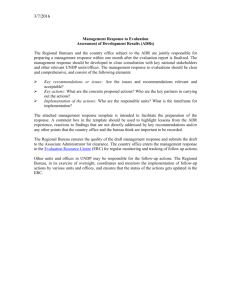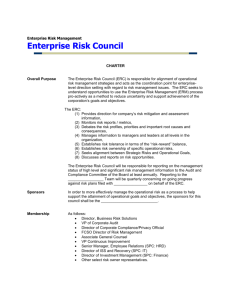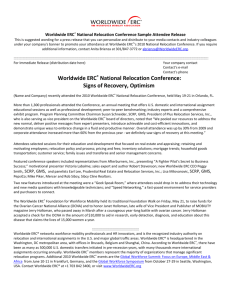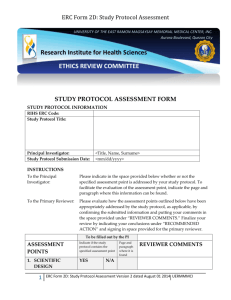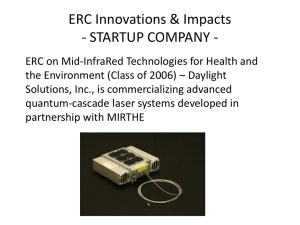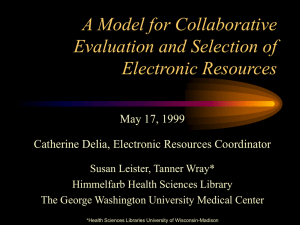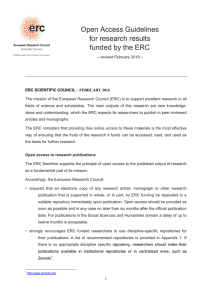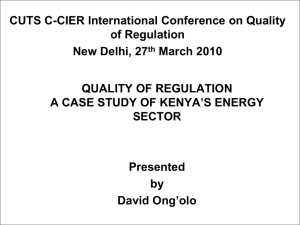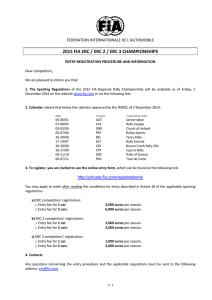Student Video - Air Traffic Safety Action Program (Bati)
advertisement
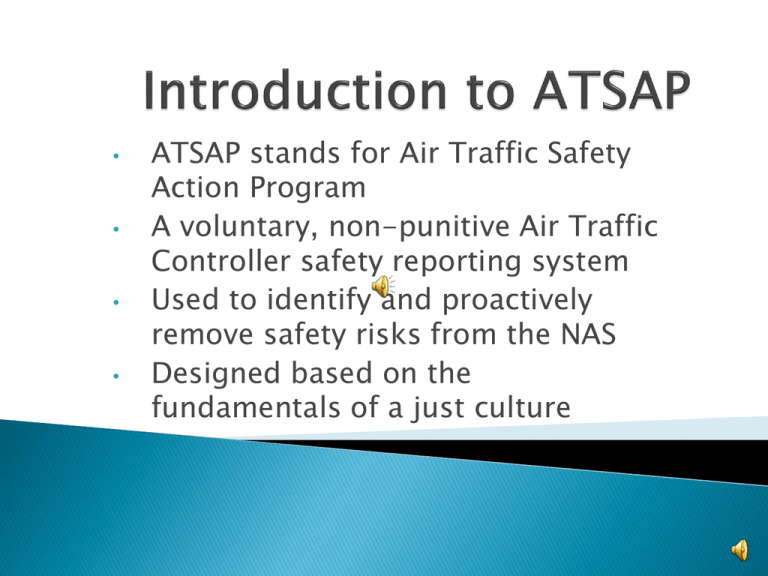
• • • • ATSAP stands for Air Traffic Safety Action Program A voluntary, non-punitive Air Traffic Controller safety reporting system Used to identify and proactively remove safety risks from the NAS Designed based on the fundamentals of a just culture Avoids fear of retribution and blame thereby encouraging flow of safety related information Promotes trust and supports learning from unsafe acts It is neither blameless nor punitive, there will always be difference between acceptable and unacceptable behavior Promotes constructive attitude which will tend to prevent future violations AOV provides independent oversight and monitors ATO operations to determine compliance with standards and directives ATO is responsible for the daily operation of Air Traffic Control NATCA is employee union to represent the Air Traffic Controllers Controllers may file: OEs/ODs/PEs/RIs/PDs Any potential safety risk to the NAS such as: Poor or confusing airport signage Unsafe policies or procedures Equipment, software or automation problems Traffic management initiatives that don’t properly address sector needs ◦ Aircraft operating procedures & airspace configurations ◦ Human factors (fatigue, scheduling…) ◦ Unsafe or inadequate training practices ◦ ◦ ◦ ◦ All air traffic personnel engaged in and supporting air traffic services, and only to events that occur while acting in that capacity Events involving noncompliance as determined by the ERC Events caused by gross negligence or reckless conduct are not accepted by ATSAP In exchange for voluntary reporting, ATO won’t decertify or take disciplinary action for events that are accepted into ATSAP AOV will use lesser action or no action based on the level of noncompliance with applicable air traffic directives Safety Problem: Issues at a local, regional, or national level related to policies, procedures, equipment, automation, and publications, deals largely with Systemic issues Safety Event: Incidents which result in actual or potential lost of separation or situations that results in safety degradation in the NAS. Examples are: OE/OD/PE, NMAC, RI, VPD, military facility deviation, spill out, surface incident, go arounds For each submitted reports, pre-analysis is conducted by the analysts Identifying and confidential information is removed and the reports are made ready Reports are added to respective ERC (Event Review Committee meetings Actual decision for each report is done by the ERC during meetings ERC is composed of AOV, ATO, and NATCA, with experts from areas such as Oceanic Procedures, Flight Service, Tech Ops, Automation etc. There is one ERC for each service area and each handle reports from its own service area ERC meets every week, two to three days and make decisions. If a decision is difficult to make, the report is carried over to the next meeting Act on problems based on reports Generate AIR and CAR to fix problems by coordinating with Facility Managers Provides feedback to individual controllers by coordinating with Fac Rep Add proper taxonomies in reports and close for future analysis and trending Categorize as known or unknown issues and put in watch list if necessary Make corrective action recommendations for: ◦ individuals, like skill enhancement training ◦ Organizations, systemic correction ATSAP is a success story for the FAA and the industry The largest safety program in the world 50,000 reports in just three years Hundred of positive changes in the NAS Help build just culture where controllers openly share their mistakes without fear of punishment
